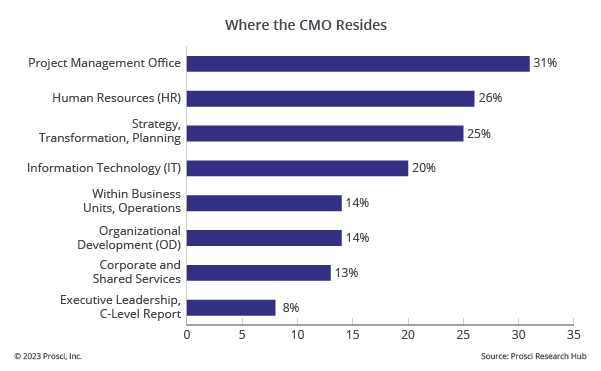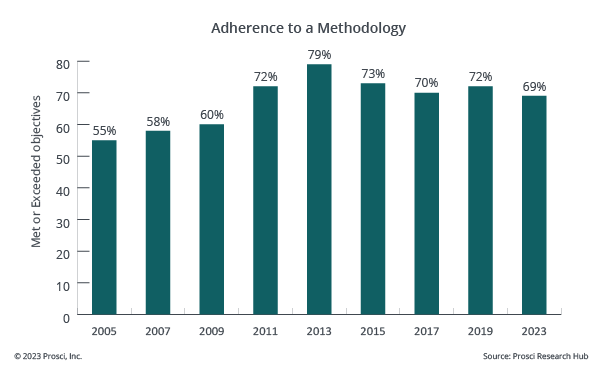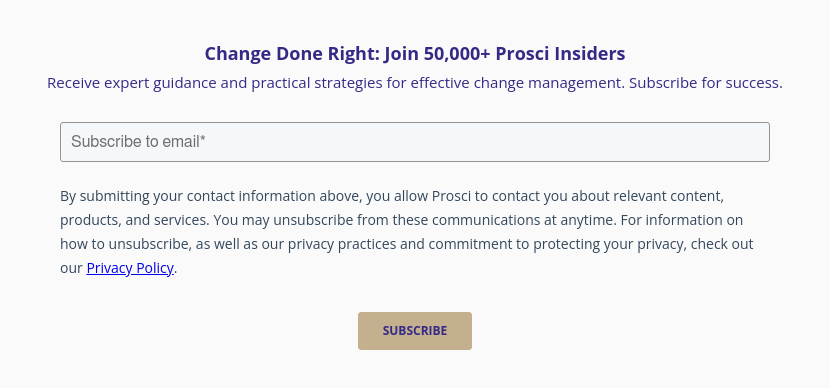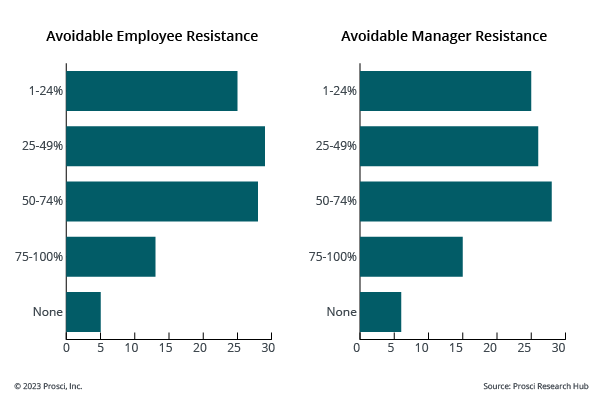6 Notable Shifts in the Best Practices in Change Management

4 Mins
Updated: March 19, 2025
Published: June 21, 2023

The 12th Edition of the Best Practices in Change Management study reveals reliable insights for change professionals. So reliable, some may think of the best practices a bit like an almanac for the change management discipline. However, the study also uncovered notable shifts that may change the way you do change management.
 Shifts in the Change Management Data
Shifts in the Change Management Data
Prosci identified noteworthy shifts in the 12th edition data and findings in six key areas:
- Change management office (CMO) location
- Use of a structured methodology
- Budget and resources
- Resistance management
- Employee engagement
- Portfolio management
1. Movement in change management office location
Study participants reported a notable shift in the location of the change management office. For the first time in the history of Prosci research, the most common place for the CMO to be located is the project management office (PMO) instead of human resources (HR).
This shift in findings is an interesting part of the CMO's evolutionary story. Back in 2007, we asked participants for the first time, "If you have a CMO, where does it live?" The top response was HR by a 2-to-1 margin over IT, which was the second most common.
The recent shift we saw in moving change management to the PMO may be a natural extension of the need for tight integration between the project management and change management functions. Our other research supports this notion. Integrating project management and change management is the No. 5 top contributor to change success. Project management challenges comes in as the sixth greatest obstacle to change management success. And aligning change management and project management is the third most identified theme in the research, where we asked practitioners what they would do differently on their next project.
Today, the PMO is the most popular location with the strategy, transformation and planning office making a significant move to top of the list.

2. Less use of a structured methodology
For the first time since 2011, fewer than 70% of participants said they follow a formal change management methodology. The decrease in the use of a structured methodology may be attributed to the rise of Agile and adaptive approaches in change management. In fact, study participants identified Agile change management practices as a top trend over the next five years.
Organizations are embracing iterative methods that allow them to adapt to changing circumstances and respond quickly to emerging challenges. Additionally, change management is now being embedded as a core capability within project approaches and implementation methodologies, making it more of a redefinition of business as usual, rather than a separate discipline.

3. Shifts in change management budget and resources
Despite a slight decrease in the percentage of change management budget reported, the latest study highlights a positive trend where there is an increase in the percentage of change management resources dedicated to supporting change management on the project or initiative.
A possible interpretation is that organizational budgets are being allocated to hire change management professionals (that is, dedicated change management resources), which may be resulting in slightly smaller budgets being available to do the activities and work of change management (that is, slightly lower dedicated change management budgets).

4. Less avoidable resistance
Manager and employee resistance is less avoidable than in previous studies. Participants report that resistant behaviors are something to expect and plan for as organizations continue to move forward in their changes.
This is an interesting reflection of the conditions of recent years. Historically, participants said they dealt with more resistance that could have been avoided through better planning and by better supporting impacted people and groups proactively.
But the nature of change today is different. There is a greater focus on the need for balance and flexibility as people experience burnout and change fatigue. These factors contribute to an environment where resistance often persists despite applying good change management, and it must be expected and planned for throughout the life of a change.

5. Greater employee engagement
Employees are more engaged, according to respondents, who report a large increase in the "very engaged" category. Organizations may think of engagement as how passionate people feel about their jobs, their commitment to the organization, or the level of discretionary effort they put into their work.
The organizational change created by the pandemic has led to heightened levels of engaged employees. In fact, our research on the Top Contributors to Change Success in a Post-Pandemic World, which we conducted right before the Best Practices study, revealed engagement to be an emergent theme. The same study found that employee engagement was a priority and challenge for organizations before the pandemic, and it was the second most identified theme after the pandemic.
This greater employee engagement likely resulted from the need for organizations to focus on the employee experience while mitigating turnover and staffing shortages. When you look at the research we're doing in the context of the pandemic, we see employees are now saying they feel very engaged. That is a positive finding in terms of organizations reaching out to the employees and bringing them along in the in the change process.
In the Participants' Words
According to research participants, very engaged employees result from:
"Continuous improvement in both understanding the importance of and practicing stakeholder engagement"
"More engagement and co-creation of solution design with our front-line employees"
"Positive experience for stakeholders when engaging, feeling valued and seeing direct outcomes from their engagement"
Source: Prosci Research Hub
6. More portfolio management
Managing organizational changes as a portfolio is on the rise. The number of participants that report actively managing a portfolio of changes increased from 38% to 43%.
Given the amount of change organizations are experiencing, it stands to reason that we're seeing a more concerted effort to address collision and increase coherence of multiple projects and programs running simultaneously or concurrently in the organization. Much like air traffic control, portfolio management requires a high level of organization, attention to detail, and adaptability to successfully manage multiple projects and programs at once. And in the same way an air traffic controller must quickly adjust plans and handle unexpected changes, a portfolio manager must navigate shifting priorities and avoid collisions between projects to ensure that each one achieves its desired outcomes.
Separately, the increase in portfolio management may be linked to the PMO overtaking HR as the top location for the CMO, as well as the rise of the Strategy, Transformation and Planning office to the third position. Specifically, the message seems to be that portfolio management is becoming critical to effective project delivery and strategy realization.
Experience Prosci Research and Data
Prosci research offers the latest insights in change management, from notable shifts in the Best Practices data to post-pandemic shifts in the top contributors to success, and much more. And Prosci research empowers you to experience the data and insights your way. Now you can quickly and easily find the most relevant information to your projects and initiatives, and develop focused, data-driven change management strategies that support your goals and objectives.



